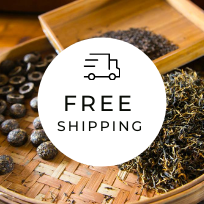- HOME >
- Origin of Tea
Origin of Tea
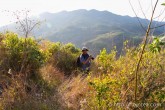
As compared to other places in China, every year I spend a lot more time in Yunnan. The reason is simple. In the entire world of tea, besides Yunnan, it is hard to find another place that is so rich in the natural-farmed tea. In Yunnan, we have a bountiful opportunity to explore the tea …
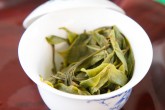
I have just purchased Ma An Shan raw pu-erh tea, one of the prestigious teas in my raw pu-erh tea line-ups. Four famous tea production areas in Lincang For sourcing pu-erh tea in Yunnan Province of China, I focus on Lincang where the altitude and latitude is higher than the south such as Meng Hai. …
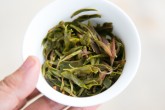
We have completed the sourcing of one of the important teas, the Da Xue Shan Wild Tea. This is the raw pu-erh tea processed from wild tea spices called Camelia taliensis. Da Xue Shan 2015 was tailor-made to meet our requirement Last year, we have had a difficult situation on this tea. We bought this …
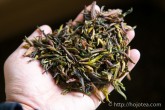
The first tea I have to search in Yunnan is Wild Spring Bud. It is the tea made of wild tea spieces called camellia taliensis. It gives distinctive flavour that reminds me of green apples, grapes or the fresh young tree barks. The earliest plucked tea is very precious For us, it is very important …
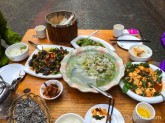
- [2015.03.24]
- Getting inspired by the rich food culture in Yunnan
While traveling in Yunnan province for hunting pu-erh tea, I often drop by the local restaurant. To be frank, I am very fascinated with local cuisine. It is one of my favorite times throughout my trip. The deeper we go, the thicker the taste of food it becomes Based on my experience, the taste of …

- [2015.03.22]
- Spring Tea Hunting in Yunnan 2015 Just Began
I have been in Yunnan since 20th March 2015 to hunt for new crop of raw pu-erh tea. Quality tea is first come first served In Lincang region of Yunnan, the very first crop of pu-erh tea is available around 20th March. Usually, tea is harvested starting from the gardens at lower altitude where generally …
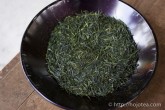
- [2015.02.24]
- Why do you brew green tea at lower temperature?
Talking about brewing Japanese green tea, many people generally has accepted that it should be brewed at lower temperature as it was always emphasized in most of the internet media and books regarding tea topics, many resources explain that sencha has to be brewed at 70-80 degree C. Nevertheless, I personally prefer to use boiling …
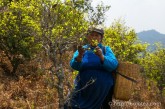
- [2015.01.28]
- The reason to hunt for the naturally farmed tea
In 2014 I went to Yunnan, China twice and stay there for about a month plus. For now, most of teas have already arrived and I am enjoying drinking it every day. The main purpose that I keep going to the Yunnan tea production site is to look for tea grown with the natural farming …

Many of us tend to associate Chinese tea with pu-erh tea and oolong tea. However, more than 70% of tea produced in China is green tea (approximately 1138,000 tons). Literally, we can say that Chinese tea = green tea as a whole. If you have ever travelled to China, you might discover that most of …

- [2015.01.17]
- Rich body and aftertaste, Uji Sencha Fukamushi
We quietly released Uji Sencha Fukamushi last year. Uji Sencha Fukamushi is not an ordinary Fukamushi sencha. Collaboration between Sencha and Fukamushi Sencha In Japanese, the “fukamushi” means deeply steamed. Fukamushi sencha is produced following the standard process in making a sencha, but a longer steaming process is conducted compared to ordinary sencha. The sencha …
PAGE 13 OF 19
- Yunnan Chun Jian Green Tea from High Mountain Gardens
- Yunnan Chun Jian Green Tea is now available.This tea is made from naturally grown leaves harvested from high mountain gardens at 2100m above sea level. It has a rich, long-lasting lingering aftertaste, comparable to raw Pu-erh tea. Yunnan as a Distinctive Tea Growing Region Over the past 20 years, we have explored a wide range …
- Limited Loose Leaf Release of 2025 Da Xue Shan Wild Raw Pu-erh Tea
- We have released the 2025 loose-leaf version of Da Xue Shan Wild Raw Pu-erh Tea.This tea comes from wild tea trees that grow naturally in the high mountains of Yunnan Province, at elevations above 2000 meters. This year, we were only able to secure a small quantity for retail, and the current release is available …
Popular ArticleOrigin of Tea
 Full body and strong after taste, Ma An Shan Raw Pu-erh Tea
Full body and strong after taste, Ma An Shan Raw Pu-erh Tea- This year in spring, I have bought Ma An Shan Raw Pu-...
 Getting inspired by the rich food culture in Yunnan
Getting inspired by the rich food culture in Yunnan- While traveling in Yunnan province for hunting pu-erh...
 Yunnan’s Hospitality Culture: Expressed Through Meals
Yunnan’s Hospitality Culture: Expressed Through Meals- In China, as a form of greeting, it's common to sa...
 Yunnan 2024 Spring Tea Sourcing
Yunnan 2024 Spring Tea Sourcing- Yunnan Province is globally renowned for the excep...
 Chaozhou, the Birth Place of Asian Street Foods
Chaozhou, the Birth Place of Asian Street Foods- I have been staying in Chaozhou city and surrounding...
 HOJO original tailor-made tea from Yunnan
HOJO original tailor-made tea from Yunnan- In HOJO’s tea lineup, we have many teas produced...
 Wild Tea Tree in Wu Liang Shan, Yunnan
Wild Tea Tree in Wu Liang Shan, Yunnan- In 2011, I visited Wu Liang Shan of Yunnan province...
 Naturally Farmed Tea Garden is Slowly Disappearing in Yunnan
Naturally Farmed Tea Garden is Slowly Disappearing in Yunnan- Every year I am staying in Yunnan and buying a number...
 The strong spirit of Chaozhou people preserve the tradition
The strong spirit of Chaozhou people preserve the tradition- The Chaozhou cuisine and phoenix dan cong oolong ha...
 In Search of Wild Tea: Exploring Mountain Villages in Southwest Lincang, Yunnan
In Search of Wild Tea: Exploring Mountain Villages in Southwest Lincang, Yunnan- We are currently sourcing tea in the southwestern...
Shop Info

Address:Lot No. T-215, 3rd Floor, The Gardens Mall, Mid Valley City, Lingkaran Syed Putra, 59200 Kuala Lumpur
Tel: +603-2287-4537
Business Hour: 10am to 10pm
Category
- New Arrival at HOJO Online Shop
- Featured Articles
- Newsletter
- Types of Tea
- Origin of Tea
- Teapot and Tea Equipment
- Tea Column
- How to enjoy tea
- Tea Processing
- How to choose quality tea
- Tea constituents and functional effect
- Safety of Tea
- Foods
- Tea Business Operation
- Hobby and Outdoor Activity
- Ranking of Tea
- Video
- FAQ
- Media Release
Profile

- AKIRA HOJO
- I invite you to experience my tea selections.I was born in Nagano, Japan. In university, I studied agricultural chemistry, and I have the master degree in food science. I worked in Japanese food industry for 10 years. I involved in R&D, QC and QA. As a factory manager, I implemented ISO9000 series and managed the factory.
- The Art of Tea Magazine
- We posted the article on “The Art of Tea Magazine No.9, the magazine is published in Taiwan. We featured some scientific view about the tetsubin
- New Straits Times
- The Malaysian National Newspaper, New Straits Times featured HOJO Tea on 17-Oct-2007.

